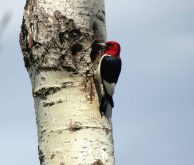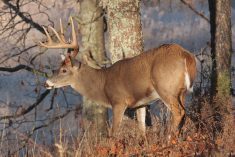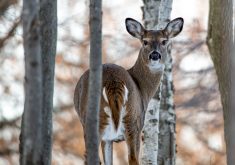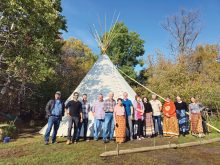Critical habitat is being protected surrounding Riding Mountain National Park as part of a conservation initiative led by the Nature Conservancy of Canada.
“In the Manitoba region, the Nature Conservancy of Canada (NCC) is working hard to protect some of the last natural cover in the area around Riding Mountain National Park (RMNP),” said Ursula Goeres, Manitoba regional vice-president. “By protecting irreplaceable habitat and the plants and animals that it supports, we can ensure that future generations will be able to enjoy its natural beauty.”
Read Also

Mazergroup’s Bob Mazer dies
Mazergroup’s Bob Mazer, who helped grow his family’s company into a string of farm equipment dealerships and the main dealer for New Holland machinery in Saskatchewan and Manitoba, died July 6 from cancer.
While the RMNP is highly regarded as a large and important representative sample of this Riding Mountain Aspen Parkland (RMAP) eco-zone, it is also known that the park alone is insufficient to provide the ongoing habitat needs of the entire region. Additional effort and protection is required by NCC and others.
NCC along with its partners announced the protection of three properties making up an additional 462 acres (187 hectares) in the RMAP area. The protected lands are located in one of only 15 United Nations designated Biosphere Reserves in Canada. These three parcels were selected for protection due to their habitat value and their strategic location within the RMAP. These three properties are vital components of larger landscapes. This creates networks of protected areas that give species the room they require to survive and prosper.
One of the properties lies at the northern end of the Little Saskatchewan River Valley about a half-mile east of Riding Mountain National Park. While this portion of the Riding Mountain upland is dominated by hummocky knob-and-kettle topography, the southeast half of the property is characterized by lowlands where two streams wind. These lowlands are dominated by cattail, willow and sedge wetlands. The remainder of the property supports aspen, woodland, pothole wetlands, tame forage and cultivated fields.
The second property has been added to NCC’s Elk Glen project, directly south of Deep Lake. In addition to aspen parkland it also contains boreal forest and permanent wetlands. While part is farmed, the remainder contains permanent wetlands and high-quality forested areas. A large permanent pothole provides suitable habitat for wood ducks and other waterfowl.
The surrounding area is also home to a variety of wildlife including elk, moose, wolf, white-tailed deer, coyote, red fox, and the occasional cougar.
On June 12, volunteers from the Nature Conservancy of Canada and the Manitoba Breeding Bird Atlas Project identified 70 different bird species including the threatened Olivesided Flycatcher, a species at risk in Canada, during a survey on the Elk Glen project.
Northeast of Erickson, the Proven family has generously donated a conservation easement on land they own, thus ensuring that no development will take place and natural values of the land will be preserved. This mixed habitat provides excellent grassland bird-nesting cover, shelter, feeding and breeding grounds for many mammals, birds, and invertebrates.
Conservation easements, or Conservation Agreements (CAs) as they are also known, allow landowners to permanently protect the habitat on their property for future generations. They continue to hold title to the land.
The Riding Mountain Aspen Parkland represents one of the last remaining ecologically functional landscapes in Prairie Canada, according to NCC. Species and habitats of Northern, Western and Eastern Canada meet here. Prairie wildflowers give way to aspen parkland, which yields to highland evergreens and lowland eastern hardwood forest.
This work ensures that habitat is preserved for the survival of a long list of wildlife that includes black bear, elk, cougar and several at-risk species such as the loggerhead shrike, Canada warbler and the redheaded woodpecker.
The Nature Conservancy of Canada (NCC) is the nation’s leading land conservation organization, working to protect our valuable natural areas and the plants and animals they sustain.
A number of partners have made possible the acquisition and long-term care of these three properties. The Government of Canada is providing support under the Natural Areas Conservation Program. The Province of Manitoba has also provided funding as part of a $7-million Conservation Program Grant that it is providing to NCC’s Manitoba region to support the conservation and protection of areas of ecological significance in Manitoba.
To learn more visit: www.natureconservancy.ca.


















